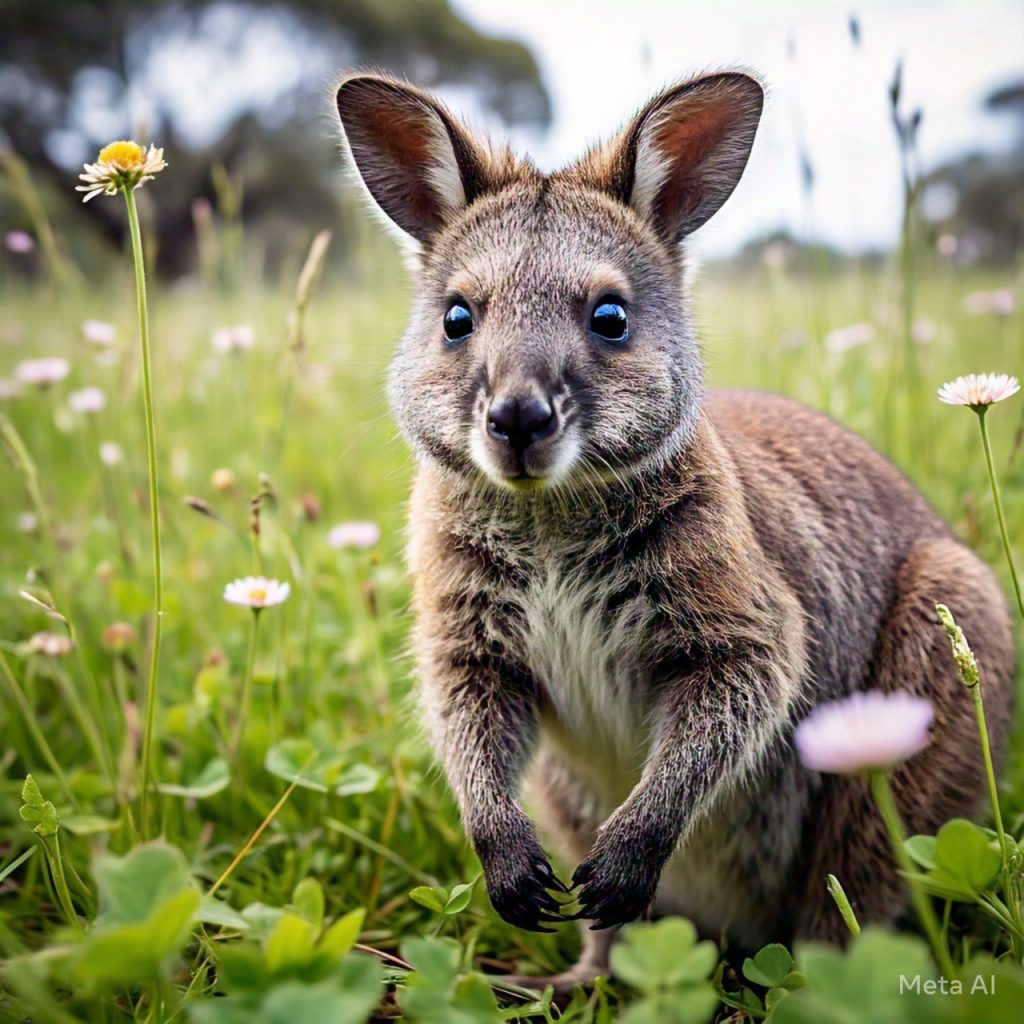Wallabies, iconic marsupials native to Australia, are among the most fascinating creatures in the animal kingdom. They are closely related to kangaroos and share many of the same features, but wallabies are generally smaller and exhibit unique behaviors and ecological roles. In this comprehensive guide, we’ll explore everything there is to know about wallabies, from their biology and habitat to their cultural significance and conservation.
What Are Wallabies?
Wallabies belong to the family Macropodidae, which translates to “big foot.” This family includes kangaroos, tree kangaroos, and pademelons. There are approximately 30 species of wallabies, divided into groups like rock wallabies, brush wallabies, and swamp wallabies.
Physical Characteristics
- Size: Wallabies vary in size, typically ranging from 18 to 42 inches in body length, with tails that can be as long as their bodies.
- Weight: They usually weigh between 4 and 53 pounds, depending on the species.
- Color: Their fur can be reddish, brown, gray, or black, often with lighter underbellies.
Where Do Wallabies Live?
Wallabies are distributed across Australia, Tasmania, and nearby islands, with a few species introduced to other regions.
Natural Habitat
- Forests: Many wallabies thrive in dense forests, where they feed on leaves, fruits, and grasses.
- Rocky Outcrops: Rock wallabies are adapted to rugged, rocky terrain and can leap incredible distances to navigate steep surfaces.
- Wetlands: Swamp wallabies, as their name suggests, inhabit marshy areas and are proficient in foraging aquatic vegetation.
Behavior and Diet
Behavior
Wallabies are crepuscular, meaning they are most active during dawn and dusk. This behavior helps them avoid predators and extreme daytime temperatures.
- Social Structure: Wallabies can live solitarily or in groups called mobs.
- Communication: They use thumping sounds, hissing, and coughing noises to communicate warnings or discomfort.
Diet
Wallabies are herbivores with diets varying by habitat:
- Grasses and shrubs
- Leaves and fruits
- Mosses and ferns
Their digestive systems are similar to ruminants, allowing them to extract nutrients efficiently from fibrous plants.
Reproduction and Lifespan
Wallabies are marsupials, which means they carry and nurse their young, called joeys, in a pouch.
- Gestation: Pregnancy lasts about 28-38 days, depending on the species.
- Development: After birth, joeys crawl into the mother’s pouch, where they continue developing for several months.
- Lifespan: Wallabies can live between 7 to 15 years in the wild, with longer lifespans in captivity.
Cultural Significance
Wallabies hold a prominent place in Australian culture and folklore. They appear on coins, stamps, and logos, symbolizing the country’s unique wildlife. Indigenous Australians also have stories and traditions featuring wallabies, highlighting their importance in Aboriginal culture.
Threats to Wallabies
Despite their adaptability, wallabies face several threats:
- Habitat Loss: Urbanization, agriculture, and deforestation destroy their habitats.
- Predators: Introduced species like foxes, feral cats, and dogs prey on wallabies.
- Climate Change: Shifting weather patterns disrupt food availability and habitat stability.
- Road Accidents: Collisions with vehicles are a significant cause of mortality.
Conservation Efforts
Various initiatives aim to protect wallabies and their habitats:
- Protected Areas: National parks and reserves safeguard critical habitats.
- Captive Breeding: Programs help increase populations of endangered species like the brush-tailed rock wallaby.
- Community Education: Raising awareness about wallaby conservation fosters public support.
- Legislation: Strict wildlife protection laws curb poaching and illegal trade.
How You Can Help
- Support Conservation Organizations: Donate or volunteer with groups working to protect wallabies.
- Drive Safely in Wildlife Zones: Reduce speed in areas known for wallaby crossings.
- Promote Native Vegetation: Plant native species to create habitats for wallabies.
Final Thoughts
Wallabies are extraordinary creatures that play a vital role in their ecosystems. From their remarkable adaptations to their cultural significance, wallabies deserve admiration and protection. As threats to their survival grow, it’s essential to support conservation efforts to ensure these marsupials thrive for generations to come.
By understanding and appreciating wallabies, we can contribute to their preservation and celebrate their place in the natural world.

